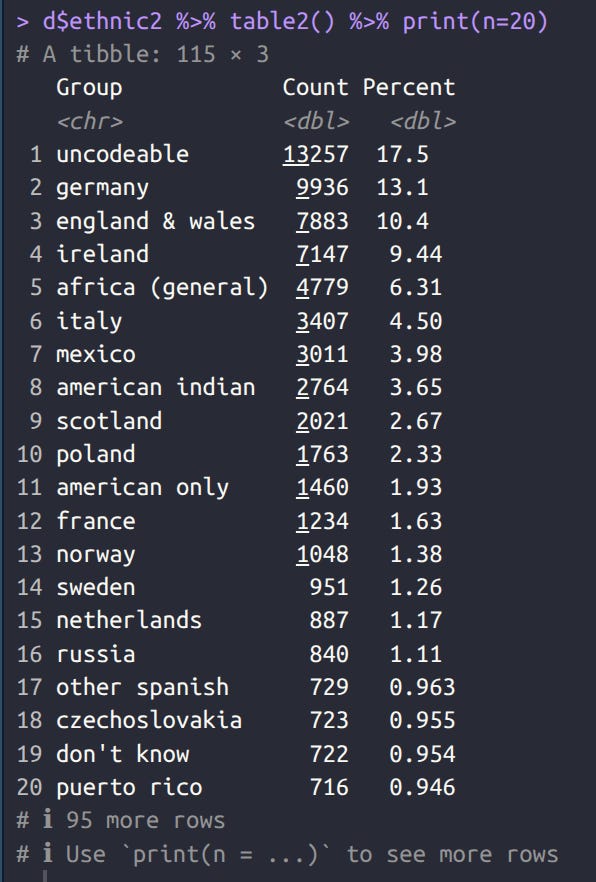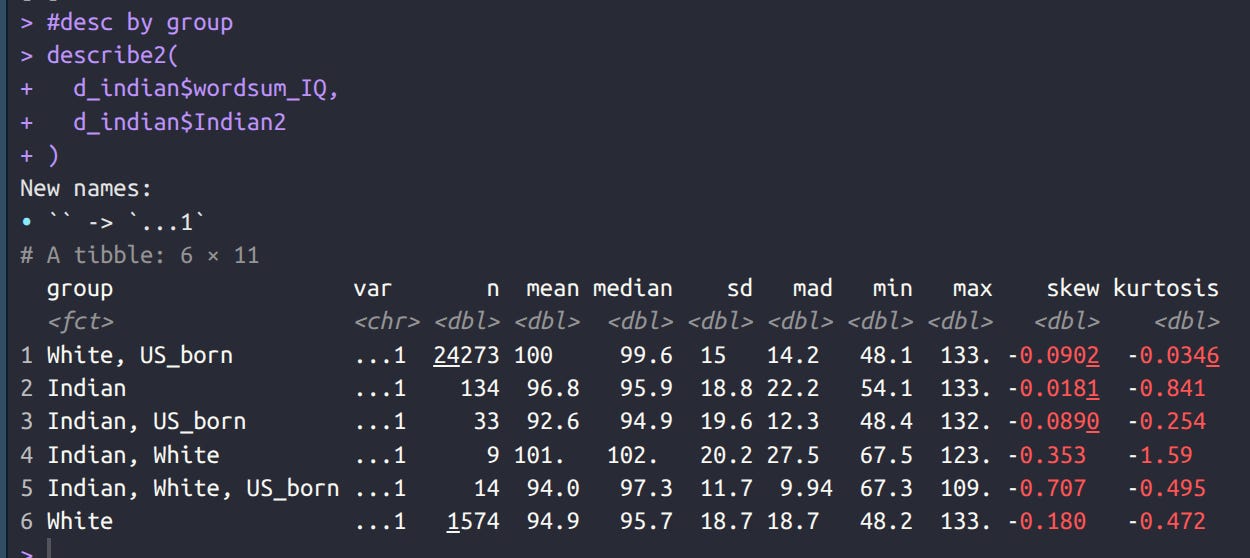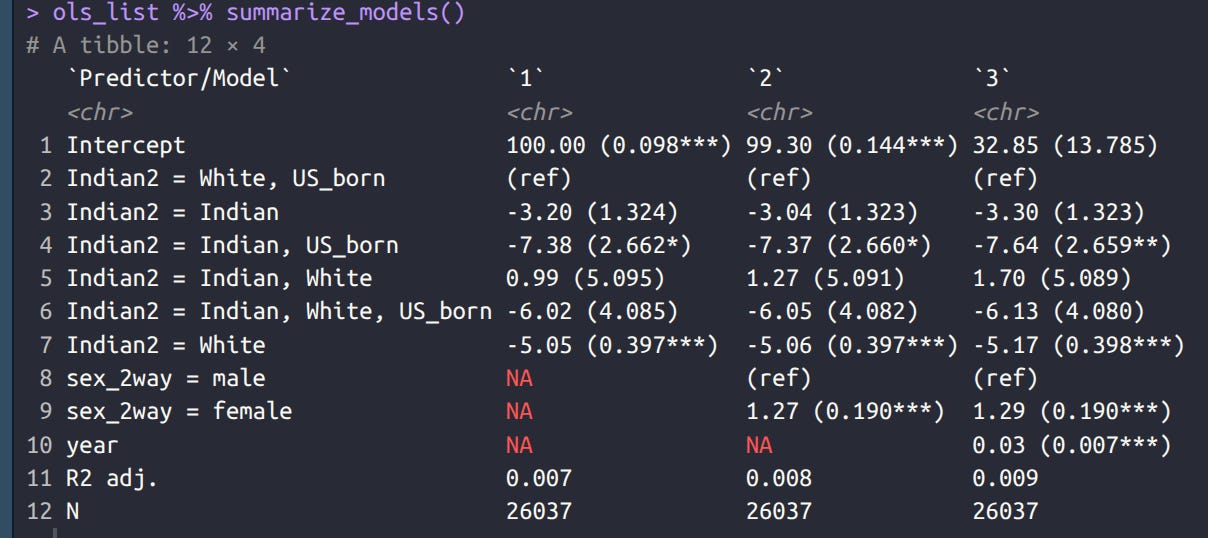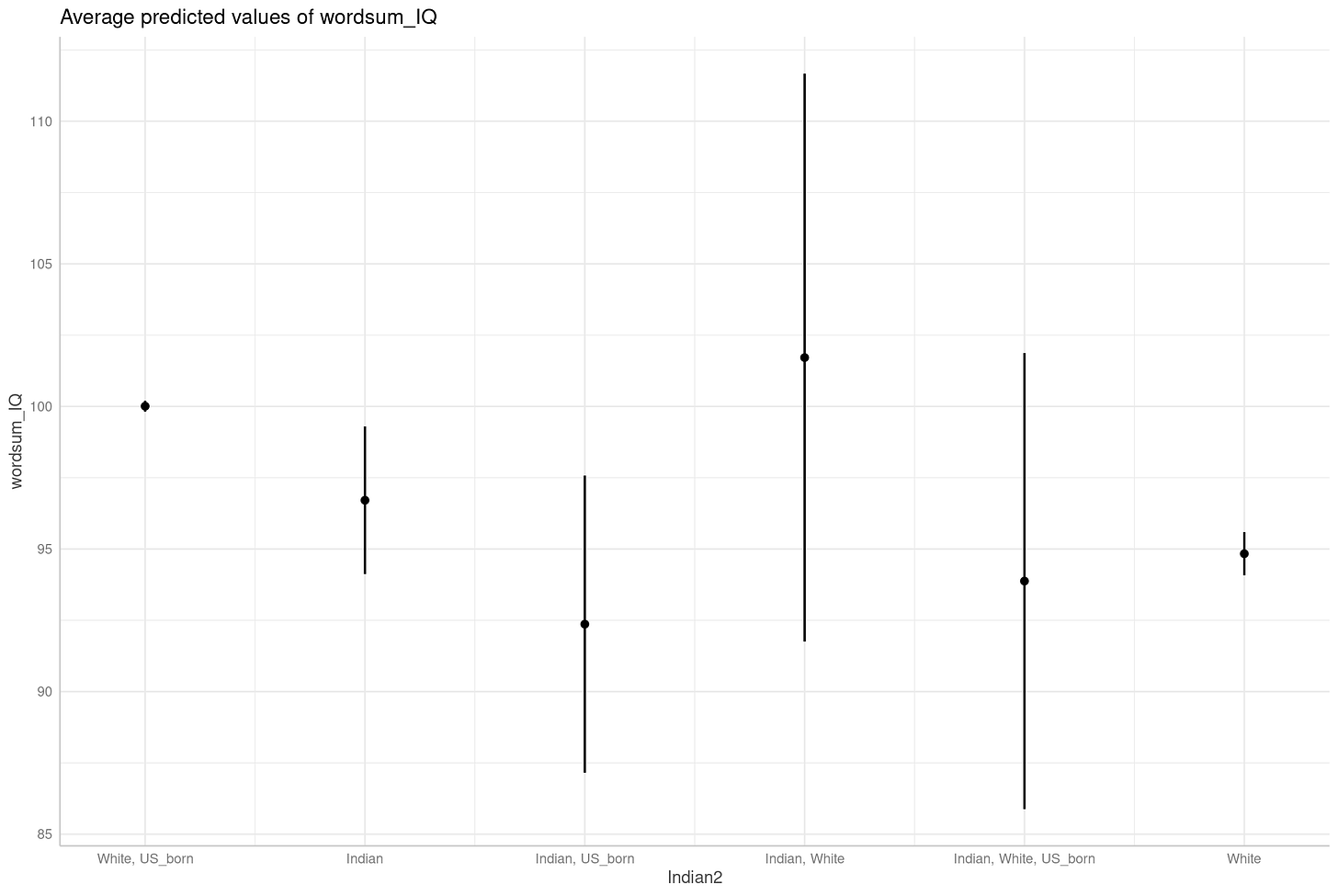Indian IQ in the USA: GSS data
~95 IQ
Aaron has a new short piece on Indian IQ in the USA using the GSS. I decided to replicate this analysis with better methods.
The GSS is somewhat of a mess, since the variables change between years and thus so does the pattern of missing data. To find the Indians, we cannot use the regular race variables, but we can use the "ethnic" one, which asked:
From what countries or part of the world did your ancestors come?
A. IF MORE THAN ONE COUNTRY NAMED:Which one of these countries do you feel closer to?
This is one of the variables that many people use to look at the distribution of American ethnic groups. It is problematic for people of mixed ancestry, which in the USA is almost everybody since the variable splits varieties of Europeans:
As well as includes odd options such as "American only" (what ethnic group is that?). Nevertheless, one of the options is "India", which covers 406 subjects. However, many of these have missing data for other variables we need. We also need to avoid the mixed Indian-Whites for analysis, so we combine the GSS race variable in the subset of complete data (for age, Wordsum, survey year, Indian, race variables), to get this distribution of options:
The categories are exclusive, so "Indian" means non-US born Indian (134 people) and 33 US born Indians, for a total of 167. Using these, and the subset with Wordsum data, we can norm the IQ to US-born Whites (adjusted for effects of age on means and variance). Doing so gives us these summary stats:
We check that US-born Whites is indeed at 100/15, which it is. The two main Indians groups are at 97 and 93 IQ. We can additionally control for sex and survey year. Women score about 1.3 IQ higher on this test (women don't normally score higher on vocabulary, but they do on these 10 items). Survey year relates to Flynn effects. The models show us:
The differences are not due to sex or survey year differences (this is necessary because much of the White data comes from older survey years that had very few Indians). We can then plot the model predictions for the final model to get a visual sense of the uncertainty:
Here we can see that the samples are small enough that the US born and foreign born Indians don't differ more than chance would expect. It is therefore unwise to make strong speculations about regression towards the mean vs. language bias explanations. Though we can note on the latter that foreign born Whites scored 95 IQ on the test. Given that foreign born Whites are somewhat selected (to get a visa to live in the US), these 5 IQ probably reflect language bias. This may also suggest about 5 IQ bias against the foreign born Indians (raising their IQ to 102).
In sum, then, GSS shows us that US Indians aren't that elite by US standards, but they are nevertheless quite elite by Indian standards. In my prior post, the mean IQ of Indians in India is about 75, and those in USA according to the GSS are about 95-100, which is about +20-25 IQ of selection. This is a very elite subset of Indians in general. We are now in the process of doing a comprehensive meta-analysis of Indian IQ results with a focus on Indian migrant IQs in various countries. So far results indicate that Indians in Anglo countries are around 100 IQ, whereas Indians in various non-western countries are around 85-90 IQ. Such results are compatible both with environmental IQ gains (out of the Indian environment into something nicer), and with general and varying migrant selectivity.







If they're that selected, wouldn't you expect a large regression to the mean? My anecdotal impression of second gen Indian Americans is less intelligent than East Asians but still around 95-100 IQ.
Can you explain the immigration in the tech industry? If their IQ is below average, why the HB-1 and concentration in tech. I read a story about Indian nepotism or ethnicism in the US. Is this reality? Thx.